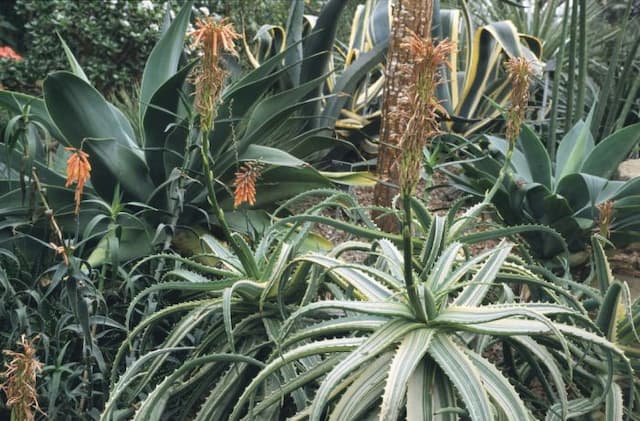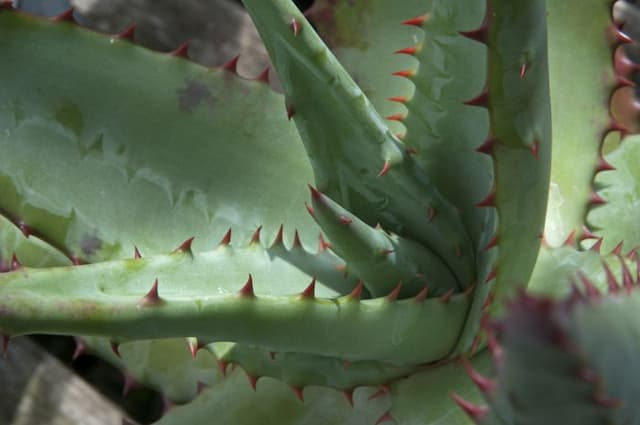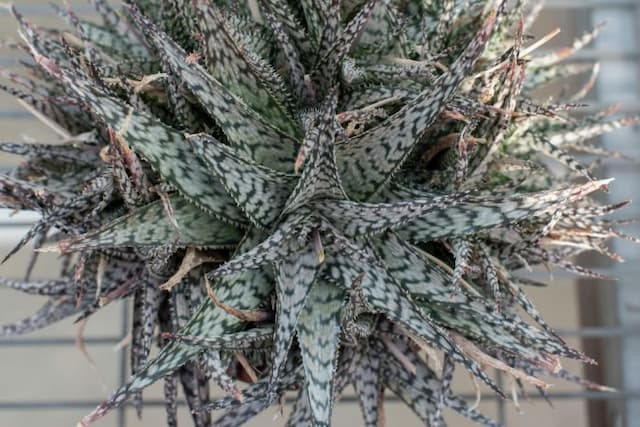Foxtail lily Eremurus × isabellinus 'Pinokkio'

ABOUT
The plant, commonly known as Foxtail Lily 'Pinokkio', exhibits a striking and distinctive aesthetic that is highlighted by its long, spire-like blooms. These impressive flower spikes are covered densely with small, star-shaped blooms that create a brush-like effect. The flowers come in a warm shade that can vary across specimens but usually presents in soft sunset tones, often ranging from a pastel yellow to orange or occasionally a soft peach hue. The leaves of the Foxtail Lily 'Pinokkio' are elongated and strap-like, with a slightly arching habit that forms an elegant foliage clump at the base of the plant. They have a green color that serves as a backdrop for the vivid flower spikes, adding to the plant's overall visual interest. As the blooming season progresses, these leaves may start to yellow and fade away as the plant directs its energy towards the development of its blooms and subsequently to its seed production after the flowering has finished. The overall appearance of Foxtail Lily 'Pinokkio' is that of a vertical accent in the landscape, with its tall, slender flowering spikes rising above the foliage, offering a sense of height and drama without actually specifying its measurements. The plant is often used in garden designs for this vertical interest and is known to attract pollinators, adding not just beauty but also ecological value to the spaces where it is grown.
About this plant
 Names
NamesSynonyms
Foxtail Lily, Desert Candle
Common names
Eremurus × isabellinus 'Pinokkio'.
 Toxicity
ToxicityTo humans
Foxtail lilies, including the cultivar Eremurus × isabellinus 'Pinokkio', are not commonly known to be toxic to humans. While they are not considered edible, there is no widely recognized evidence or data that suggest significant toxicity upon ingestion. However, as with many ornamental plants, it is advisable to avoid consuming any part of the plant due to potential individual allergies or gastrointestinal upset.
To pets
Foxtail lilies, including the cultivar Eremurus × isabellinus 'Pinokkio', are not commonly known to be toxic to pets, including cats and dogs. There is no specific evidence indicating toxicity upon ingestion of this plant by pets. However, it is generally recommended that pets do not eat ornamental plants, as they could cause stomach upset or an allergic reaction in some animals.
 Characteristics
CharacteristicsLife cycle
Perennials
Foliage type
Deciduous
Color of leaves
Green
Flower color
Yellow
Height
4 feet (1.2 meters)
Spread
2 feet (0.6 meter)
Plant type
Bulb
Hardiness zones
5
Native area
Central Asia
Benefits
 General Benefits
General Benefits- Ornamental Value: Eremurus × isabellinus 'Pinokkio' is known for its striking spikes of flowers that add vertical interest to garden landscapes.
- Drought Tolerance: Once established, it is quite tolerant of drought, making it a good choice for xeriscaping and water-conserving gardens.
- Attracts Pollinators: The flowers are attractive to bees and other pollinators, which can help to improve the health and yields of nearby plants and crops.
- Easy to Grow: This plant is relatively low-maintenance, requiring minimal care once it is established in a suitable location.
- Seasonal Interest: It blooms in late spring to early summer, providing a showy display of flowers at a time when many spring blooms are fading.
- Deer Resistance: Eremurus is not a preferred plant for deer, so it is less likely to be damaged in areas with high deer populations.
 Medical Properties
Medical PropertiesThis plant is not used for medical purposes.
 Air-purifying Qualities
Air-purifying QualitiesThis plant is not specifically known for air purifying qualities.
 Other Uses
Other Uses- Photography Subject: The Eremurus 'Pinokkio', commonly known as the Foxtail Lily, is often used in macro photography due to its intricate blooms and towering spires, providing a visually appealing subject.
- Textile Dye: The blossoms of the Foxtail Lily may potentially be used as a natural dye source for textiles, giving a unique color derived from nature.
- Educational Tool: Botany educators use the Foxtail Lily to teach students about unique plant structures and pollination strategies due to its distinct flower shape and arrangement.
- Architectural Inspiration: The striking form of the Foxtail Lily's flower spikes can serve as inspiration for architectural designs, including the layout of vertical gardens or the aesthetic of tall, slender structures.
- Artistic Muse: Artists may use the Foxtail Lily as a muse for sculptures, paintings, or other art forms, drawing from its elegance and vertical lines.
- Seasonal Celebrations: In some cultures, the Foxtail Lily might be used in spring festivals or garden ceremonies as a symbol of growth and new beginnings.
- Performance Art: The towering presence of the Foxtail Lily could be incorporated into performance art or set design to evoke a natural setting or to add vertical interest.
- Theme Gardens: The Foxtail Lily can be used to create thematic garden areas mimicking its natural habitat, helping to educate the public about various ecosystem types and conservation needs.
- Floral Arranging Education: The distinctive and pronounced spikes of the Foxtail Lily are often used in floral design classes to demonstrate the use of vertical elements in arrangements for impact.
- Ice Sculptures: During winter festivals, the shape of Foxtail Lily flower spires can inspire ice sculptures that mimic its unique form, combining the beauty of flora with transient ice art.
Interesting Facts
 Feng Shui
Feng ShuiThe Foxtail Lily is not used in Feng Shui practice.
 Zodiac Sign Compitability
Zodiac Sign CompitabilityThe Foxtail Lily is not used in astrology practice.
 Plant Symbolism
Plant Symbolism- Resilience and Survival - Eremurus x isabellinus 'Pinokkio', commonly known as Foxtail Lily, often symbolizes resilience and the ability to thrive in challenging conditions due to its origin in harsh climates and its capability to grow in well-drained soils with full sun exposure.
- Uniqueness and Individuality - The distinct tall spires of blossoms set Foxtail Lilies apart from other plants, making them represent uniqueness and individuality.
- Pride and Strength - With their statuesque presence and striking appearance, Foxtail Lilies can symbolize pride and inner strength, standing tall and prominently in the garden.
 Water
WaterThe Foxtail Lily, also known as Eremurus × isabellinus 'Pinokkio', prefers to be watered deeply and less frequently to encourage strong root growth. Make sure that the soil is well-draining as these plants are sensitive to waterlogging. During the active growing season in spring and early summer, water the plant with approximately 1 gallon per week, especially if the weather is dry. Once the plant is established, it is quite drought tolerant and may require less frequent watering. After the blooming period and as the leaves begin to die back, gradually reduce watering to mimic the plant's natural dry dormant period.
 Light
LightFoxtail Lilies thrive best in full sun conditions as it ensures the most vigorous growth and best floral display. This means that they should receive at least 6 to 8 hours of direct sunlight per day. The ideal spot for a Foxtail Lily would be in an area with clear exposure to the sky, possibly in a south-facing position, where it won't be shaded by other plants or structures during the day.
 Temperature
TemperatureFor the Foxtail Lily, the ideal temperature range for active growth is between 50°F and 75°F. They are winter hardy and can survive temperatures as low as -20°F, making them suitable in colder climates. However, during their growing season, they prefer the warmth of late spring and early summer. It is crucial to protect them from the extreme heat as temperatures consistently above 90°F may stress the plant.
 Pruning
PruningPruning the Foxtail Lily, or Eremurus 'Pinokkio', is primarily focused on removing spent flower spikes after blooming to encourage the plant to focus its energy on root and foliage development. This typically occurs in late summer. Additionally, cut back the foliage in late fall when it has died back naturally. There's no need for regular pruning throughout the growing season.
 Cleaning
CleaningAs needed
 Soil
SoilFoxtail lily 'Pinokkio' thrives in well-drained sandy soil with a pH range of 6.0 to 7.5. A mix with sand, compost, and a bit of peat is ideal to ensure proper drainage and fertility.
 Repotting
RepottingFoxtail lilies, including 'Pinokkio', seldom require repotting as they are perennial plants that are generally left undisturbed for years unless they become overcrowded or the soil becomes depleted.
 Humidity & Misting
Humidity & MistingFoxtail lily 'Pinokkio' prefers a dry climate and is tolerant of low-humidity environments, making it well-suited to arid conditions rather than humid ones.
 Suitable locations
Suitable locationsIndoor
Ensure ample sunlight and avoid overwatering.
Outdoor
Plant in full sun, well-drained soil, and shelter from strong winds.
Hardiness zone
5-9 USDA
 Life cycle
Life cycleEremurus × isabellinus 'Pinokkio', commonly known as Foxtail Lily or Desert Candle, begins its life cycle when the perennial rootstock sprouts new growth in early spring. Foliage emerges first, forming a rosette of long, strap-like leaves at ground level. As the season progresses, a tall flower spike rises from the center of the leaf rosette, bearing hundreds of tiny star-shaped flowers that bloom from the bottom upward. After the flowering period that occurs in late spring to early summer, the plant sets seed, which can be collected for propagation or left to self-sow if conditions are favorable. The foliage then begins to yellow and die back as the plant enters dormancy, conserving energy in the rootstock throughout the hot summer months and into winter. With the return of cooler temperatures and moisture in the following spring, the cycle begins anew with the emergence of fresh growth.
 Propogation
PropogationPropogation time
Spring-Summer
The Eremurus × isabellinus 'Pinokkio', commonly known as Foxtail Lily or Desert Candle, is typically propagated by dividing the tuberous roots, a process best carried out after the foliage has died back in late summer or early fall. The divided roots, also known as offsets or daughter tubers, should be detached gently from the parent plant, taking care not to damage them. Each segment should have at least one growth point or eye, and it is important to let the cuts dry for a couple of days to form a callus over the wound, reducing the risk of rot when planted. Offsets should be planted three to four inches deep (7.5 to 10 centimeters) in well-draining soil, spaced appropriately to allow for full growth. This method of division helps maintain the health and vigor of the plants and also multiplies the number of plants in your garden.









